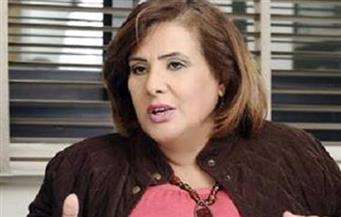Report
By Amani Eltaweel
Expert at Al Ahram Center for Political and Strategic Studies(ACPSS).
Violence in Darfur, Sudan, continued before the departure of the United Nations peacekeeping mission in 2020, as the violence in this region has maintained its accelerating pace since 2003.
Until now, dozens of victims die, the central authority try to calm the situation in vain, as was happening throughout the era of Al-Bashir, or seek to reform the situation and promise peace and stability, as happened after the Sudanese revolution 2019 and also after the Juba Peace Agreement was concluded between the Revolutionary Front for the Liberation of Darfur and the government of the revolution
With the fall of more than a thousand victims during the past two years alone as a result of violence in Darfur, legitimate questions are being asked about the reasons for the complexity of this file and how it can penetrate the volatile situation, which is one of the threats affecting the transitional period and even the safety of the Sudanese state, which said it is ready to keep peace in Darfur as an alternative to the UN peacekeepers, but according to the facts, it was unable to fill the security vacuum in Darfur.
It seems to us the recent conflicts in Darfur take on a tribal character rather than a political one, the lack of involvement of Abdul Wahid Muhammad Nur, head of the Sudan Liberation Movement in Darfur in the Juba peace process so far, maintains a climate of congestion in the region, especially since some incidents are not justified at the tribal level.
For example, the recent incident related to the hijacking of an ambulance in the far west of Darfur in the city of El Geneina.
Under the umbrella of this tension, the leaders of the Revolutionary Front, the signatories of the peace agreement with the government, did not engage in interaction with their families on the ground in a positive manner, on the contrary they remained with their forces in Khartoum awaiting the procedural steps of the agreement’s implementation.
Perhaps a statement issued by Minni Arko Minnawi, the leader of the Revolutionary Front in Darfur, is an important indicator of this, as he defined these measures by forming the rest of the power structures, especially the regional governor with full federal powers.
As well as the start of security arrangements and the formation of the joint forces to maintain security in the region, which are the forces that consist of the forces of the Darfur movements, which are signatories to the Darfur Peace Agreement, and the forces of the Sudanese army, within the limits of 12 thousand members, and their formation was delayed for a period of three months according to the procedural matrix signed between the parties to the Darfur Peace .
Power Conflicts
According to indications, it appears that Muhammad Hamdan Dagalo Hemeti, deputy Chairman of the Transitional Sovereignty Council in Sudan, is playing a role in arranging the situation in Darfur in a manner that preserves for him his influence and the status of the Rapid Support Forces that he leads
The Peace Agreement Funding Crisis
Financial compensation is one of the most important engines of the peace agreement on the ground, as the violations that took place within the framework of the Darfur conflict may be the largest in the contemporary history of Sudan, which included the burning of entire villages, including the destruction of people’s places of residence, and their confinement in camps for the displaced for years.
But this funding is linked to two obstacles, the first is the extent to which the Sudanese government agrees with the policies of the UAE in the issue of the border between Ethiopia and Sudan, as Abu Dhabi recently adopted the scenario of dividing the lands of mischief between the two parties, which Sudan rejected, and caused the failure of the UAE’s mediation in this file.
The second ch

